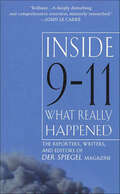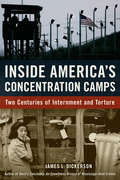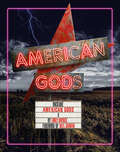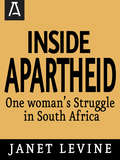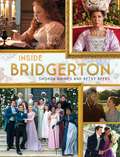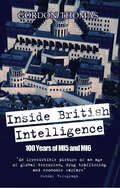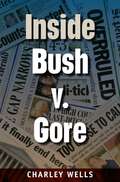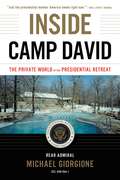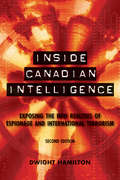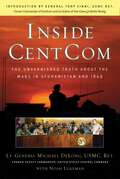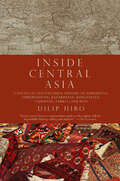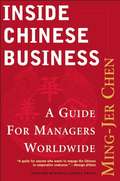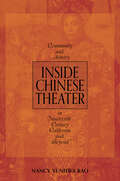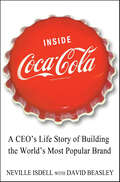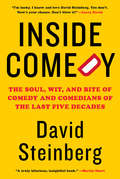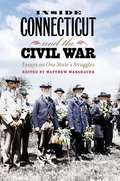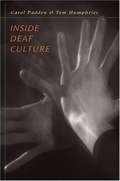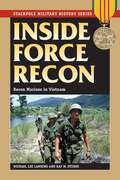- Table View
- List View
Inside 9-11: What Really Happened
by Der SpiegelThe award-winning news publication presents their groundbreaking 9/11 reporting: “A deeply disturbing and comprehensive overview” (John le Carré).Some of the finest writing and reporting on the events of September 11th was done by Der Spiegel, Germany’s magazine of record. With its main office in Hamburg, base of operations for terrorist ringleader Mohamed Atta and many of the others, Der Spiegel’s journalists were on the front lines of the earliest investigation into the identities of those who brought holy war to America.Spiegel was also at Ground Zero, gathering stories, interviewing survivors, and documenting the interconnections of horror and heroism. Inside 9-11 gives us some of these first-person accounts, taking us as close as we can get to what happened.The “why” of September 11th may remain beyond understanding. But here we learn who the terrorists were, and how they were able to take so many innocent lives by sacrificing their own. The profiles in this book render a chilling, alien mindset that has become part of our daily reality. Combining first-class investigative journalism and writing of great clarity, Inside 9-11 is a heartbreaking and gripping reconstruction of the events that changed us all.
Inside Al Qaeda: Global Network of Terror
by Rohan GunaratnaInside Al Qaeda examines the leadership, ideology, structure, strategies, and tactics of the most violent politico-religious organization the world has ever seen. The definitive work on Al Qaeda, this book is based on five years of research, including extensive interviews with its members; field research in Al Qaeda-supported conflict zones in Central, South and Southeast Asia and the Middle East; and monitoring Al Qaeda infiltration of diaspora and migrant communities in North America and Europe.Although founded in 1988, Al Qaeda merged with and still works with several other extremist groups. Hence Al Qaeda rank and file draw on nearly three decades of terrorist expertise. Moreover, it inherited a full-fledged training and operational infrastructure funded by the United States, European, Saudi Arabian and other governments for use in the anti-Soviet Jihad.This book sheds light on Al Qaeda's financial infrastructure and how they train combat soldiers and vanguard fighters for multiple guerrilla, terrorist and semi-conventional campaigns in the Middle East, Asia, Africa, the Caucuses, and the Balkans. In addition, the author covers the clandestine Al Qaeda operational network in the West. Gunaratna reveals:how Osama bin Laden had his mentor and Al Qaeda founder, "Azzam", assassinated in order to take over the organization and that other Al Qaeda officers who stood in his way were murdered,Al Qaeda's long-range, deep-penetration agent handling system in Western Europe and North America for setting up safe houses, procuring weapons, and conducting operations,how the O55 Brigade, Al Qaeda's guerrilla organization, integrated into the Taliban,how the arrest of Zacarias Moussaoui forced Al Qaeda to move forward on September 11,how a plan to destroy British Parliament on 9/11 and to use nerve gas on the European Union Parliament were thwarted,how the Iran--Hezbollah--Al Qaeda link provided the knowledge to conduct coordinated, simultaneous attacks on multiple targets, including failed plans to destroy Los Angeles International Airport, the USS Sullivan, the Radisson Hotel in Jordan, and eleven US commercial airliners over the Pacific ocean,that one-fifth of international Islamic charities and NGOs are infiltrated by Al Qaeda,how the US response is effective militarily in the short term, but insufficient to counter Al Qaeda's ideology in the long-term.Finally, to destroy Al Qaeda, Gunaratna shows there needs to be a multipronged, multiagency, and multidimensional response by the international community.
Inside Al-Shabaab: The Secret History of Al-Qaeda’s Most Powerful Ally
by Harun Maruf Dan Joseph Christopher AnzaloneOne of the most powerful Islamic militant groups in Africa, Al-Shabaab exerts Taliban-like rule over millions in Somalia and poses a growing threat to stability in the Horn of Africa. Somalis risk retaliation or death if they oppose or fail to comply with Al-Shabaab-imposed restrictions on aspects of everyday life such as clothing, media, sports, interpersonal relations, and prayer. Inside Al-Shabaab: The Secret History of Al-Qaeda's Most Powerful Ally recounts the rise, fall, and resurgence of this overlooked terrorist organization and provides an intimate understanding of its connections with Al-Qaeda. Drawing from interviews with former Al-Shabaab militants, including high-ranking officials, military commanders, police, and foot soldiers, authors Harun Maruf and Dan Joseph reveal the motivations of those who commit their lives to the group and its violent jihadist agenda. A wealth of sources including US diplomatic cables released by Wikileaks, letters taken from the Pakistani hideout of Osama bin Laden, case files from the prosecution of American Al-Shabaab members, emails from Hillary Clinton's tenure as secretary of state, and Al-Shabaab's own statements and recruiting videos inform Maruf and Joseph's investigation of the United States' campaign against Al-Shabaab and how the 2006 US-backed Ethiopian invasion of Somalia gave the group the popular support it needed to radicalize ordinary citizens and become a powerful movement.
Inside America's Concentration Camps: Two Centuries of Internment and Torture
by James DickersonExploring the history and tragedy of concentration camps that were built, staged, and filled with adults and children under the orders of the U.S. government, this vivid narrative brings the stories of victims and flaws of American government to life. Beginning in the 1830s with the imprisonment of Native Americans, this investigation details the camps that reappeared during World War II with the round-up of Japanese Americans, German Americans, Italian Americans, and Jews fleeing Nazi Germany, as well as more recently during the Bush administration with the construction of new concentration camps in Cuba. The moving personal experiences of those imprisoned in the camps, including accounts of how the U.S. government removed children of Japanese ancestry from orphanages only to replace them in camps, are revealed within this eye-opening history. Both heartbreaking and inspirational, this authoritative record of survival suggests a call to action for those who read it.
Inside American Education
by Thomas SowellAn indictment of the American educational system criticizes the fact that the system has discarded the traditional goals of transmitting knowledge and fostering cognitive skills in favor of building self-esteem and promoting social harmony.
Inside American Gods
by Emily HaynesForeword by Neil Gaiman: A companion to the Starz series, &“packed with insight and anecdotes from the show&’s creators and cast, plus plenty of photos&” (A Site Called Fred). Neil Gaiman&’s Hugo, Nebula, and Stoker Award–winning New York Times bestseller American Gods is now a critically acclaimed Starz television series. In this official companion to the first season, fans can see behind the scenes of this compelling, surreal show in which Old Gods and New Gods battle for the hearts and minds of modern-day mortals. Inside American Gods dives deep into the show&’s character development and world building—and features interviews with actors Gillian Anderson, Crispin Glover, and Ian McShane, revealing how they brought this cult favorite to the screen. Also included are previously unpublished set photos, concept art, and production designs. ©2018 FremantleMedia. All rights reserved. American Gods and related trademarks are the property of FremantleMedia.
Inside Apartheid: One Woman's Struggle in South Africa
by Janet LevineIn Inside Apartheid, South African-born Janet Levine recounts the horrors and struggles she faced against the minority white government's brutal system of repression from a rare perspective--that of a white woman who worked within the system even as she fought to transform it. With candor and courage, Levine skillfully interweaves her personal story of a privileged white citizen's growing awareness of the evils of apartheid with a moving account of the increasing violence in and radical polarization of South Africa. Inside Apartheid brings to life both the unsurpassed physical beauty and the institutionalized brutality of the country Levine loves so deeply. We accompany her on a daring trip to the devastated black township of Soweto immediately following the unrest in 1976. There she visits the home of a "colored" family with no way out of apartheid induced poverty. On a journey through the "black" homelands where Levine discovers firsthand the horrifying evidence of the long-term genocide of three million people. As a student activist, as a journalist, and as an elected member of the Johannesburg City Council, Levine openly attacked the government's policies in hundreds of speeches and articles, led election campaigns for one of her mentors, member of Parliament Helen Suzman, and was associated with Steve Biko and other less internationally famous but equally important South African figures. Levine was a founding member of the first black taxi co-operative in South Africa, and instrumental in having hundreds of illegally fired black workers reinstated with back pay after the Johannesburg strikes of 1980. We feel Levine's pain when she finally asks soul-searching questions about the effectiveness of being a white activist. Inside Apartheid, with such honest witness-bearing, may be her most important act of all.
Inside Apartheid: One Woman’s Struggle In South Africa
by Carolyn Forché Janet LevineIn Inside Apartheid, South Africa born Janet Levine recounts the horrors of the struggles against the minority white government's brutal system of repression from a rare perspective--that of a white woman who worked within the system even as she fought to transform it.With candor and courage, Levine skillfully interweaves her personal story of a privileged white citizen's growing awareness of the evils of apartheid with a moving account of the increasing violence in and radical polarization of South Africa.Inside Apartheid brings to life both the unsurpassed physical beauty and the institutionalized brutality of the country Levine loves so deeply. We accompany her on a daring trip to the devastated black township of Soweto immediately following the unrest in 1976, on a visit to a home of a "colored" family with no way out of apartheid induced poverty, on a journey through the "black" homelands where Levine discovers firsthand the horrifying evidence of the long-term genocide of three million people.As a student activist, as a journalist, and as an elected member of the Johannesburg City Council, Levine openly attacked the government's policies in hundreds of speeches and articles, led election campaigns for one of her mentors, member of Parliament Helen Suzman, was associated with Steve Biko and other less internationally famous but equally important South African figures. Levine was a founding member of the first black taxi co-operative in South Africa, and instrumental in having hundreds of illegally fired black workers reinstated with back pay after the Johannesburg strikes of 1980.We feel Levine's pain when she finally asks soul-searching questions about the effectiveness of being a white activist. This book, with such honest witness bearing, may be her most important act of all.
Inside Bridgerton
by Shonda Rhimes Betsy BeersThe stunning, full-color, behind-the-scenes look at Shondaland&’s hit series on Netflix. Inside Bridgerton is the intimate behind-the-scenes story of the hit Shondaland series on Netflix. Shondaland executive producers Shonda Rhimes and Betsy Beers offer exclusive insights, and introduce you to the series writers, producers, directors, cast, crew, and talented creatives who brought Julia Quinn&’s beloved novels to the screen. Full-color and beautifully designed, Inside Bridgerton is the official book about the show, and includes never-before-seen photographs, firsthand accounts on casting, insight into the decisions behind the costumes and sets, directors&’ accounts on filming your favorite scenes, and more from the creative minds that launched a cultural phenomenon. From the Introduction to Inside Bridgerton: SHONDA: Shall we take everyone back to the beginning? Not to the 1800s, but to 2017 and that hotel room where I was sick, and needed something to read, and there happened to be a copy of The Duke & I by Julia Quinn, the first of the Bridgerton novels. I&’m not someone who was into romance novels—I really didn&’t even know much about the genre. But I picked it up, couldn&’t put it down, and then immediately got my hands on the rest of them because they were a fabulous read. And then I passed them to you. BETSY: I thought you might have hit your head in the hotel room when you had the flu. Romance novels? But you insisted that they would be a fabulous show and you have excellent taste. I was deeply skeptical because I hadn&’t read a romance novel since I was a teen—I&’d certainly never read a period romance novel. SHONDA: Totally—you read the ones of the 1980s, when everyone wore huge shoulder pads and diamonds. BETSY: Right. So there&’s some continuity here because these guys were wearing diamonds, too. SHONDA: Fair—but as far as a period romance, I mean, if it wasn&’t Jane Austen, I didn&’t really know about it. I&’m not going to diss Jane Austen because I&’m not an idiot… BETSY: She might get upset. SHONDA: She might roll over in her grave. But Julia Quinn&’s novels were just so much juicier than Austen, and they&’re written by someone who was far less confined and less proper. After all, Julia is a modern woman, not stuck in the constraints of the age. BETSY: Without a doubt. And I never knew that the ton existed: Austen wrote about a pastoral society where everyone is in relatively drab clothes and spent a lot of time in chapels and churches. SHONDA: Totally. And they recycled their dresses more. BETSY: Meanwhile, this was an amazing world of luxury and excess. And she had this crazy device of a gossip columnist, pulling the strings, which was such a cool concept. Julia Quinn created an entirely new, glamorous, bright world that you had actually never seen before.
Inside British Intelligence: 100 Years of MI5 and MI6
by Gordon Thomas“Rollicking, readable new history of Britain’s famous spy organization.” —Los Angeles TimesA complete and up-to-date account of the two oldest and still the most powerful, secretive intelligence services in the world: MI5, the security service, and MI6, the secret intelligence service, which have been in existence for over a century. This is a story of spectacular triumphs, treachery, their frigid relationship, their untold work with the CIA, Mossad and the spy services of Europe, and their part in the fight against terror. It is also the story of two agencies led by men who are enigmatic, eccentric and controversial and who ruthlessly control their spies. From the unique partnership between Mossad and MI6, how MI5 and MI6 became a breeding ground for Soviet spies post-war, their exploitation of the collapse of the Soviet Union and their role in biological warfare, and including how both services monitor the spies of every nation based in London, it reads like fiction. But it’s not.Based on prodigious research and interviews with significant players Inside British Intelligence is packed with new and startling information.“An irresistible picture of an age of global terrorism, drug trafficking and economic warfare.” —Sunday Telegraph“ . . . a fascinating cast of moles and double agents, whistle-blowers and politicians. For the ambience of the closed world that inspired James Bond and George Smiley, this book is a winner.” —Publishers Weekly“A well-written page-turner.” —Kirkus Reviews“Thomas brings to the agencies histories a high level of expertise, a fluent style, accessible to lay reader and expert alike.” —Booklist
Inside Bush v. Gore (Florida Government and Politics)
by Charley WellsHanging chads. Butterfly ballots. Unruly demonstrations across the country. A state capital occupied by the national press corps. For thirty-six excruciating days in late 2000, a nation held its breath while seven men held in their hands the fate of the presidential election in Florida. The events that transpired within the justices’ chambers?their arguments, exhortations, and appeals to one another?have remained a mystery . . . until now. Inside Bush v. Gore presents the unique, candid, and compelling perspective of the Florida Supreme Court Chief Justice who stood at the center of the storm.
Inside Camp David: The Private World of the Presidential Retreat
by Michael GiorgioneThe first-ever insider account, timed to the 75th anniversary of Camp DavidNever before have the gates of Camp David been opened to the public. Intensely private and completely secluded, the president's personal campground is situated deep in the woods, up miles of unmarked roads that are practically invisible to the untrained eye. Now, for the first time, we are allowed to travel along the mountain route and directly into the fascinating and intimate complex of rustic residential cabins, wildlife trails, and athletic courses that make up the presidential family room. For seventy-five years, Camp David has served as the president's private retreat. A home away from the hustle and bustle of Washington, this historic site is the ideal place for the First Family to relax, unwind, and, perhaps most important, escape from the incessant gaze of the media and the public. It has hosted decades of family gatherings for thirteen presidents, from Franklin D. Roosevelt to Barack Obama, including holiday celebrations, reunions, and even a wedding. But more than just a weekend getaway, Camp David has also been the site of private meetings and high-level summits with foreign leaders to foster diplomacy. Former Camp David commander Rear Admiral Michael Giorgione, CEC, USN (Ret.), takes us deep into this enigmatic and revered sanctuary. Combining fascinating first-person anecdotes of the presidents and their families with storied history and interviews with commanders both past and present, he reveals the intimate connection felt by the First Families with this historic retreat.
Inside Canadian Intelligence: Exposing the New Realities of Espionage and International Terrorism, 2nd Edition
by Dwight HamiltonSince 9/11, Canada has been on the front lines of a New World Order that few understand. And in today’s world, secret intelligence is not just the first line of defence – it may be the only one. Editor Dwight Hamilton has assembled a formidable cast of former intelligence officers and journalists to take you inside the covert and dangerous world of espionage and international terrorism. This revised paperback edition provides a concise expos of every government organization in the Canadian national security sector. With first-hand accounts and informed analysis, the team behind Inside Canadian Intelligence has the esoteric expertise to accurately portray the new realities like no one else can. Forget James Bond: this is the real thing.
Inside CentCom: The Unvarnished Truth About The Wars In Afghanistan And Iraq
by Tony Zinni Noah Lukeman Michael DelongInside CentCom: The Unvarnished Truth About The Wars In Afghanistan And Iraq by Michael DeLong, Noah Lukeman, and an introduction by Tony Zinni
Inside Central Asia: A Political and Cultural History of Uzbekistan, Turkmenistan, Kazakhstan, Kyrgyzstan, Tajikistan, Turkey, and Iran
by Dilip Hiro&“For those who still get their &‘-stans&’ mixed up, Hiro&’s book provides a detailed and nuanced overview of the region.&” —Financial Times (Best Books of the Year) The nations of Uzbekistan, Turkmenistan, Kazakhstan, Kyrgyzstan, Tajikistan, Turkey, and Iran—the majority of them former Soviet republics—remain little understood in the West even in the post-Cold War era. This book delves into these Central Asian countries: their histories, cultures, economics, politics, militaries, and relationships with regional neighbors, Russia in particular. Ultimately, Inside Central Asia is an outstanding, in-depth introduction to this part of the world, &“full of dependable history-telling and analysis&” (The Economist). Praise for the work of Dilip Hiro &“The writing is clear and informative.&” —The New York Times &“Hiro&’s mix of lively writing and serious detail should draw in readers.&” —Choice &“Intriguing analysis.&” —Publishers Weekly &“[An] eminent historian.&” —Kirkus Reviews
Inside Chinese Business: A Guide For Managers Worldwide
by Ming-Jer ChenChen (Management, Chinese University of Hong Kong and Imperial College of Science, Technology, and Medicine--England) offers Western managers advice on navigating the Chinese business world. He explains the cultural and social principles underlying Chinese business organizations and their dynamics, illustrating his analysis with examples drawn from Asian and North American businesses. Communication patterns, networking, negotiation, competition, and the structure of China's transition economy are all discussed.
Inside Chinese Theater: Community and Artistry in Nineteenth-Century California and Beyond (Music in American Life)
by Nancy Yunhwa RaoIn the mid-nineteenth century, Chinese opera theater arrived as one of the significant performing art forms in California. Nancy Yunhwa Rao excavates and contextualizes the important history of Chinese Opera Theater, bringing to light the ways it became woven into the financial, political, social, and family life in California and beyond. Chinese opera theater found brick-and-mortar homes with San Francisco theaters like the Hing Chuen Yuen and the Donn Qui Yuen. But troupes had already followed Chinese immigrants to mining and railroad towns, and across the American West. As Chinese theater became part of California and San Francisco culture, popular Chinese actors advocated for their art alongside appeals for civil rights. Rao draws on personal diaries, newspapers and artifacts to place Chinese theater within the everyday lives of San Francisco. She also examines the costumes, singing, staging, and storytelling that impacted mainstream reception and influenced how Chinese communities saw themselves. Illustrated with seventy photographs, Inside Chinese Theater is an expert and eloquent journey into the early decades of Chinese opera in America.
Inside Coca-Cola: A CEO's Secrets on Building the World's Most Popular Brand
by David Beasley Neville IsdellThe first book by a Coca-Cola CEO tells the remarkable story of the company's revivalNeville Isdell was a key player at Coca-Cola for more than 30 years, retiring in 2009 as CEO after regilding the tarnished brand image of the world's leading soft-drink company. This first book by a Coca-Cola CEO tells an extraordinary personal and professional world-wide story, ranging from Northern Ireland to South Africa to Australia, the Philippines, Russia, Germany, India, South Africa and Turkey. Isdell helped put out huge public relations fires (India and Turkey), opened markets(Russia, Eastern Europe, Philippines and Africa), championed Muhtar Kent, the current Turkish-American CEO, all while living the ideal of corporate responsibility. Isdell's, and Coke's, story is newsy without being gossipy; principled without being preachy. Inside Coca-Cola is filled with stories and lessons appealing to anybody who has ever taken "the pause that refreshes." It's also a readable and important look at how companies can market and govern themselves more-ethically and to great success.
Inside Comedy: The Soul, Wit, and Bite of Comedy and Comedians of the Last Five Decades
by David SteinbergThe world of comedy and comedians of the last five decades. By the man the New York Times calls "a comic institution himself," the only comedian (twenty-six years in stand-up) to have made Elie Wiesel laugh, as well as having appeared on The Tonight Show (140 times, second only to Bob Hope, but who's counting). From the director of TV comedy series Mad About You, Seinfeld, Friends, Weeds and Curb Your Enthusiasm. Larry David: &“I&’m lucky. I know and love David Steinberg. You don&’t. Now's your chance. Don&’t blow it!" &“David has always been a comedy hero to me. One of his many gifts is the ability to inspire funny people to be even funnier, as you will discover in this truly hilarious, insightful book.&” --Martin Short From David Steinberg, a rabbi's son from Winnipeg, Canada, who at age fifteen enrolled at Hebrew Theological College in Chicago (the rabbinate wasn't for him) and four years later, entered the master's program in English literature at the University of Chicago, until he saw Lenny Bruce, the "Blue Boy" of Comedy, the coolest guy Steinberg had ever seen, and joined Chicago's Second City improvisational group, becoming, instead, the comedian's comedian, director, actor, working with, inspired by, teaching, and learning from the most celebrated, admired, complicated comedians, then and now--a funny, moving, provocative, insightful look into the soul, wit, and bite of comedy and comedians--a universe unto itself--of the last half-century.From the greats: George Burns, Lenny Bruce, Sid Caesar, Lucille Ball, Mel Brooks, and Carl Reiner, et al., to the newer greats: Carol Burnett, Steve Martin, Lily Tomlin, Billy Crystal, Bob Newhart, and the man for all comedy, Martin (Marty) Short; to the greats of right now: Chris Rock, Dave Chappelle, Julia Louis-Dreyfus, Wanda Sykes; and more . . .Steinberg, through stories, reminiscences, tales of directing, touring, performing, and, through the comedians themselves talking (from more than 75 interviews), makes clear why he loves comedy and comedians who have been by his side in his work, and in his life, for more than sixty years. Here are: Will Ferrell, Eric Idle, Whoopi Goldberg, Mike Myers, Groucho himself and the greatest of them all (at least of the last half century), Jonathan Winters . . .
Inside Connecticut and the Civil War
by Matthew WarshauerThis collection of nine original essays provides a rich new understanding of Connecticut's vital role in the Civil War. The book's nine chapters address an array of individual topics that together weave an intricate fabric depicting the state's involvement in this tumultuous period of American history. In-depth examinations of subjects as diverse as the abolitionist movement in Windham County, the shipbuilding industry in Mystic, and post-traumatic stress disorder in Connecticut veterans serve as an excellent companion to Matthew Warshauer's earlier book on the subject, Connecticut in the American Civil War: Slavery, Sacrifice, and Survival. Contributors include David C. W. Batch, Luke G. Boyd, James E. Brown, Michael Conlin, Emily E. Gifford, Todd Jones, Diana Moraco, Carol Patterson-Martineau, and Michael Sturges. Ebook Edition Note: 6 illustrations have been redacted.
Inside Deaf Culture
by Tom Humphries Carol Padden<P>In this [account] of the changing life of a community, the authors of Deaf in America reveal historical events and forces that have shaped the ways that Deaf people define themselves today. Inside Deaf Culture relates Deaf people's search for a voice of their own, and their proud self-discovery and self description as a flourishing culture. <P>Padden and Humphries show how the nineteenth-century schools for the deaf, with their denigration of sign language and their insistence on oralist teaching, shaped the lives of Deaf people for generations to come. They describe how Deaf culture and art thrived in mid-twentieth-century Deaf clubs and Deaf theater, and they profile controversial contemporary technologies. <P> Most triumphant is the story of the survival of the rich and complex American Sign Language long misunderstood but finally recognized by a hearing world that could not conceive of language in a form other than speech. In a moving conclusion, the authors describe their own very different pathways into the Deaf culture, and reveal the confidence and the anxiety of the people of this tenuous community as it faces the future.
Inside Delta Force: The Story of America's Elite Counterterrorist Unit
by Eric HaneyNow the inspiration for the CBS Television drama, "The Unit." Delta Force. They are the U.S. Army's most elite top-secret strike force. They dominate the modern battlefield, but you won't hear about their heroics on CNN. No headlines can reveal their top-secret missions, and no book has ever taken readers inside--until now. Here, a founding member of Delta Force takes us behind the veil of secrecy and into the action to reveal the never-before-told story of 1st Special Forces Operational Detachment-D (Delta Force).
Inside Force Recon: Recon Marines in Vietnam
by Michael Lee Lanning Ray William StubbeOperating in 4 to 8 man teams, the patrols of Force Recon ventured far into the very backyard of the enemy, the North Vietnamese Army.
Inside Force Recon: Recon Marines in Vietnam (Stackpole Military History Series)
by Michael Lee Lanning Ray W. StubbeBehind-enemy-lines stories of elite Marines in VietnamForce Recon companies were the eyes and ears of the Marine Corps in Vietnam. Classified as special operations capable, Force Recon Marines ventured into the enemy&’s backyard to conduct reconnaissance and launched deliberate strikes against the enemy. Lanning and Stubbe blend analysis and you-are-there stories of Force Recon in action to create the definitive account of Recon Marines.
